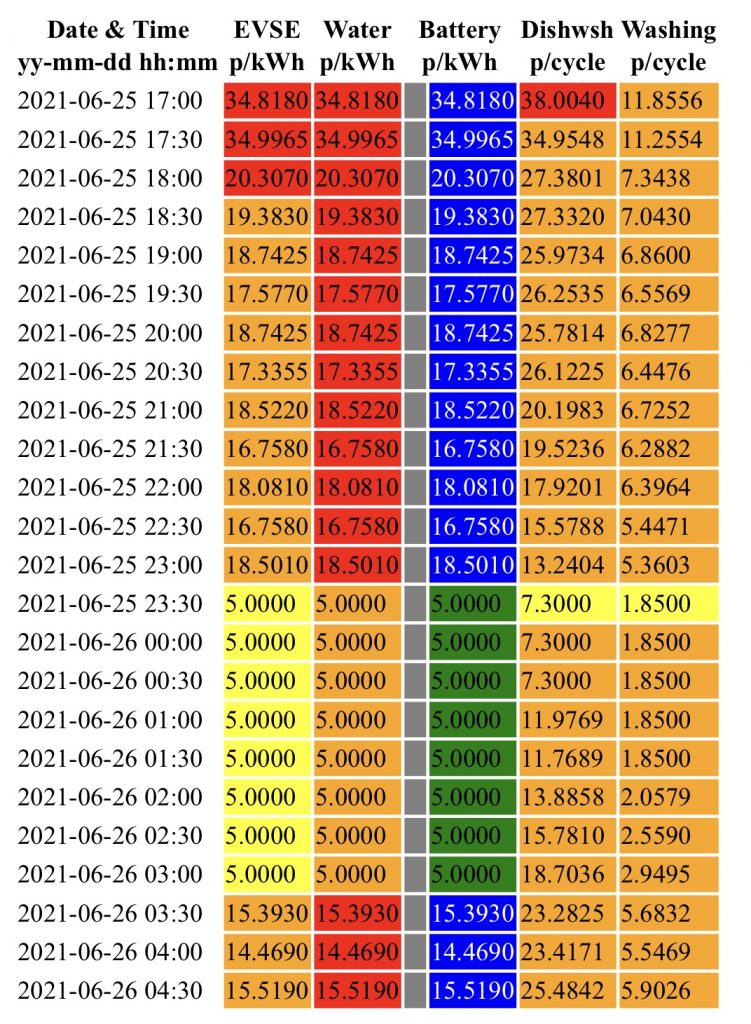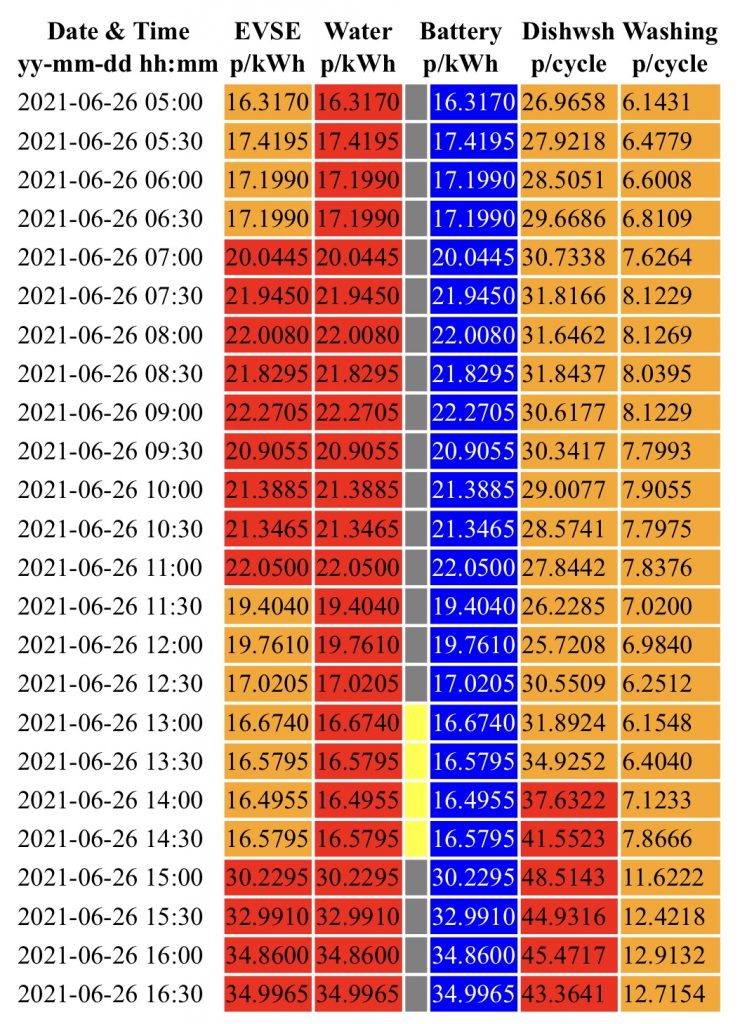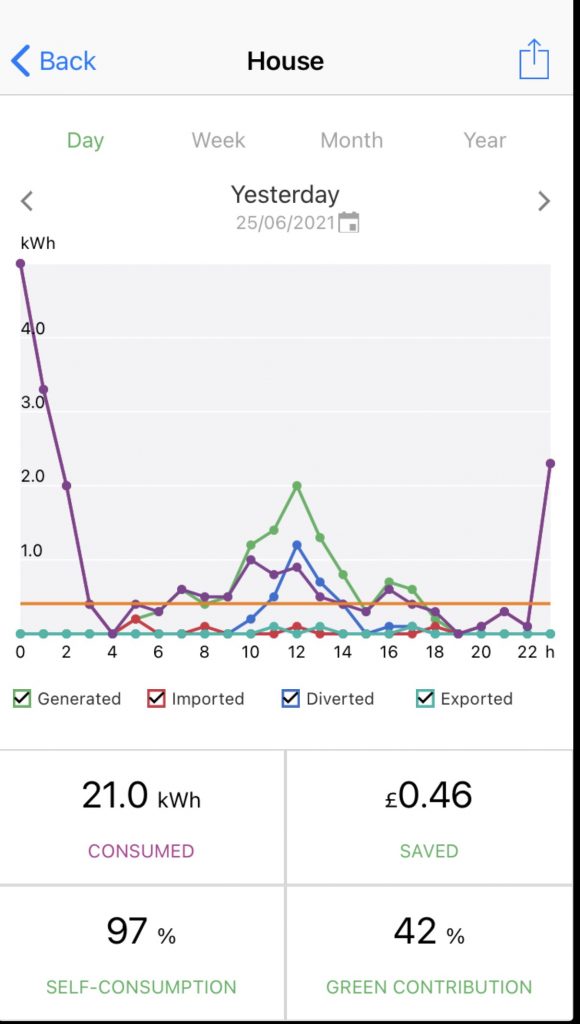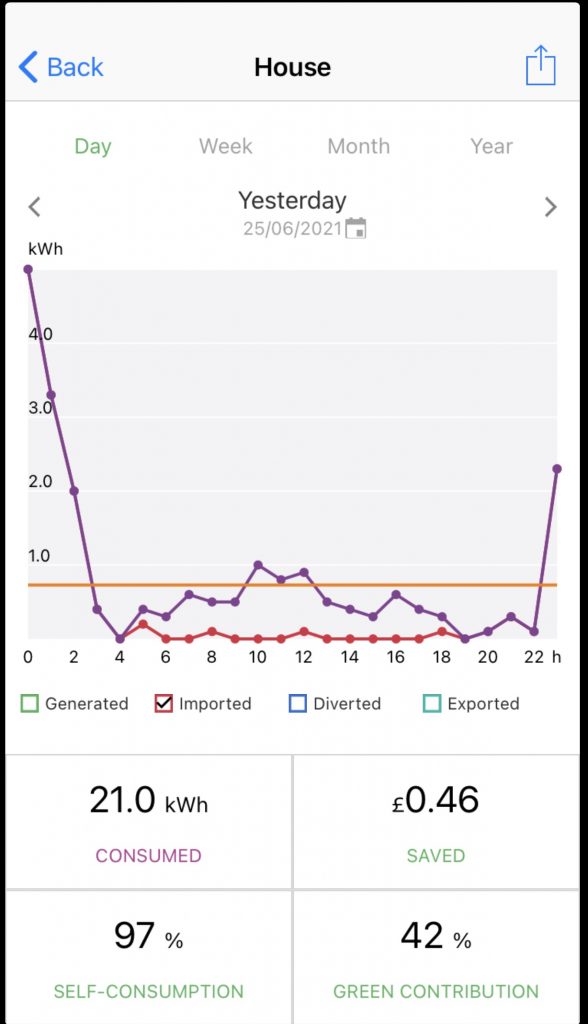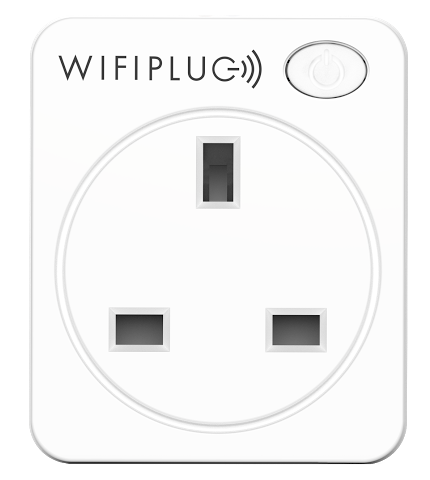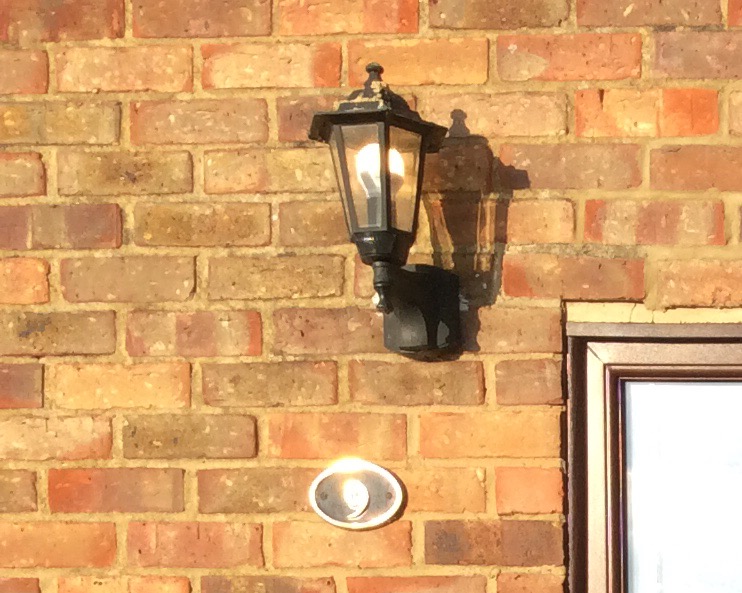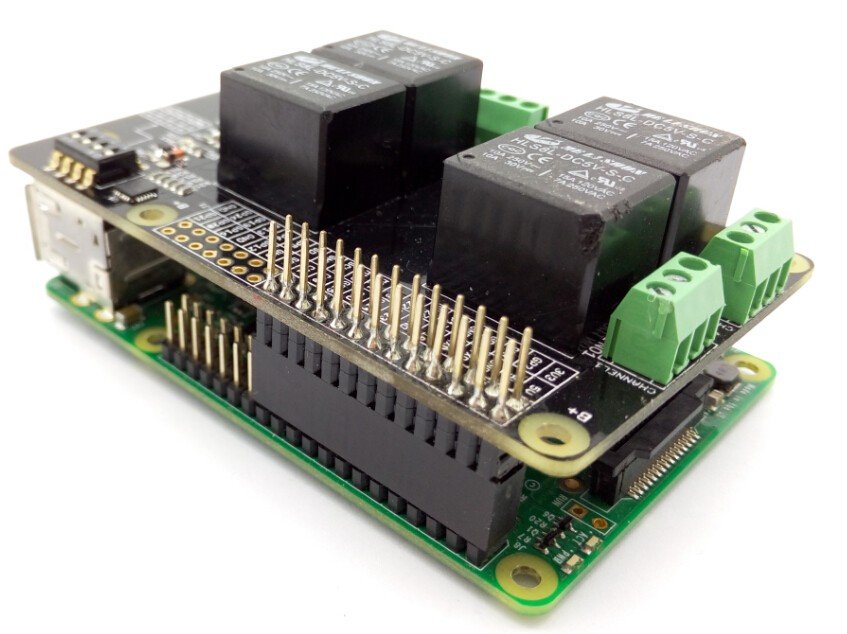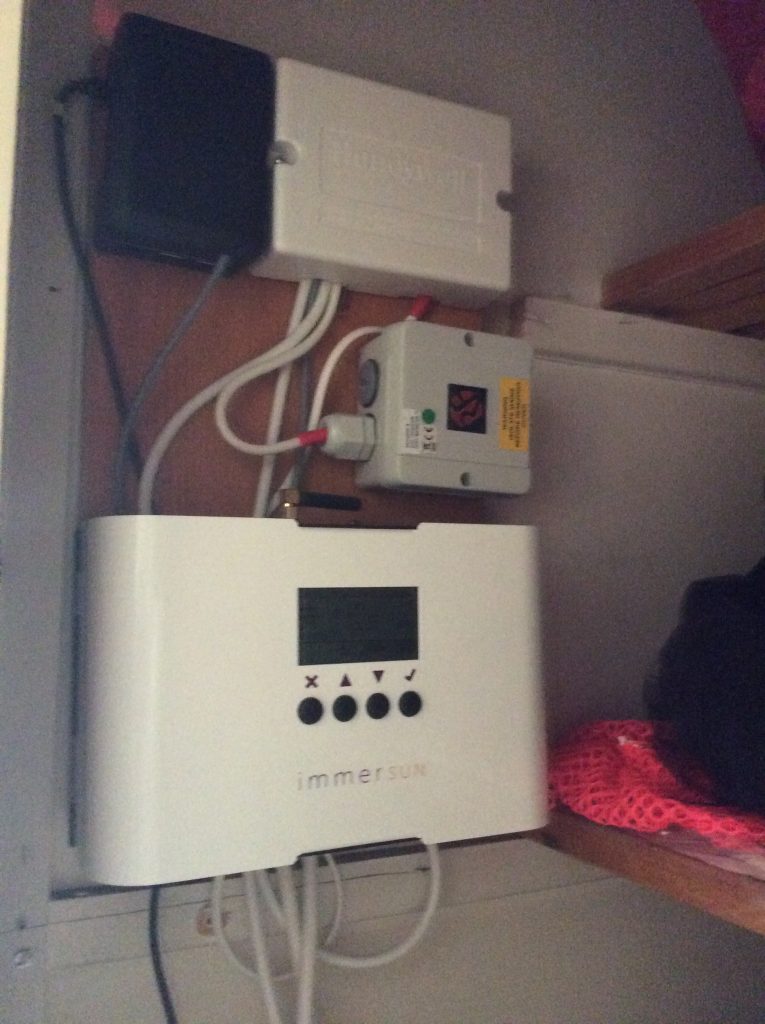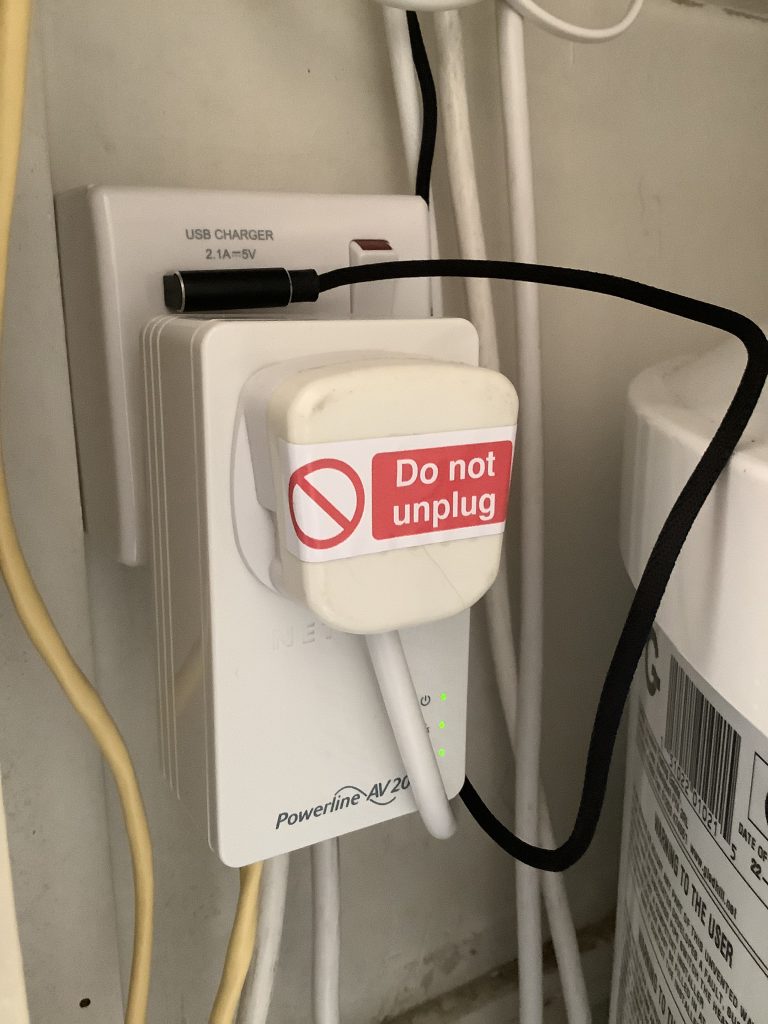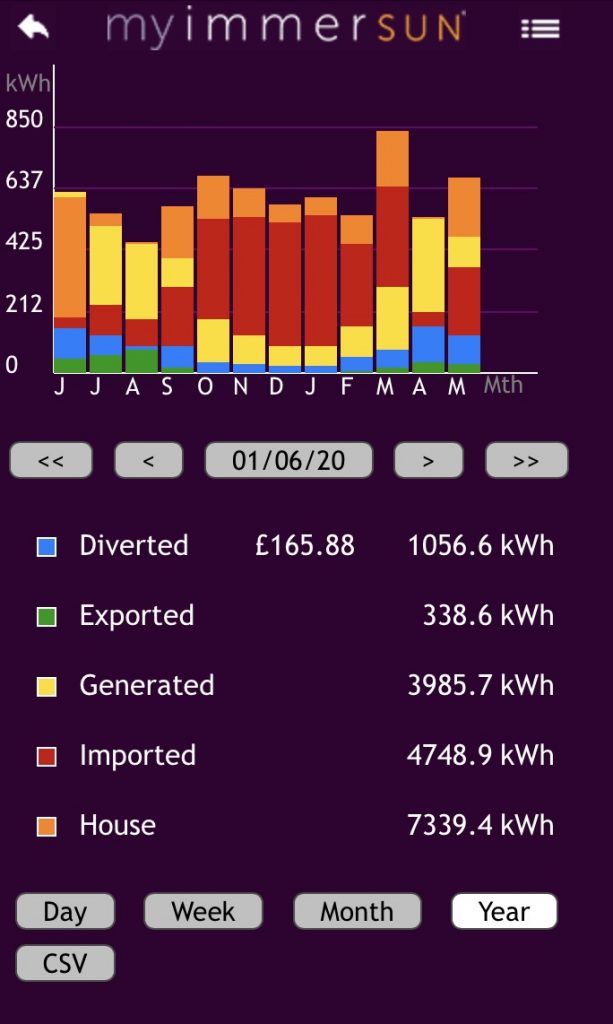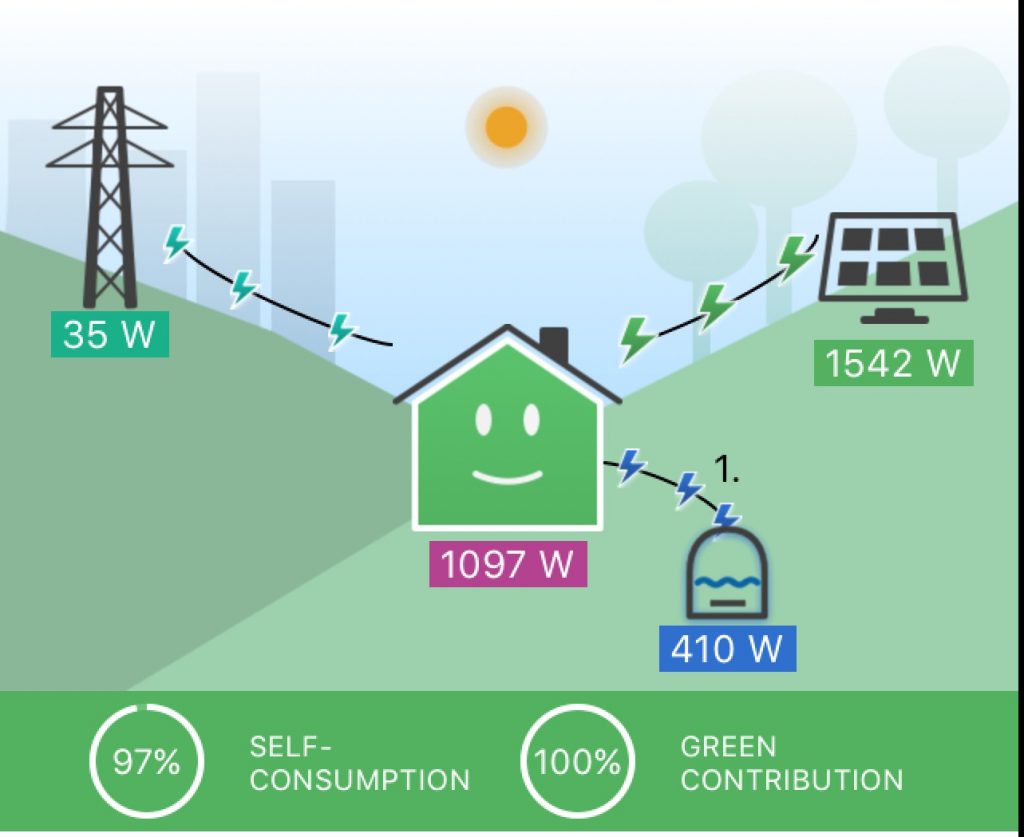For the last few years I’ve been a user of, and advocate for, Octopus Energy’s Agile tariff. This unique tariff in the UK is linked to half-hourly wholesale electricity prices and gives the user 48 half-hourly electricity prices each day. As the price of electricity varies considerably from one half hour to another, customers like myself could save quite a lot of money by shifting consumption around such as by charging the car or running the washing machine at different times.
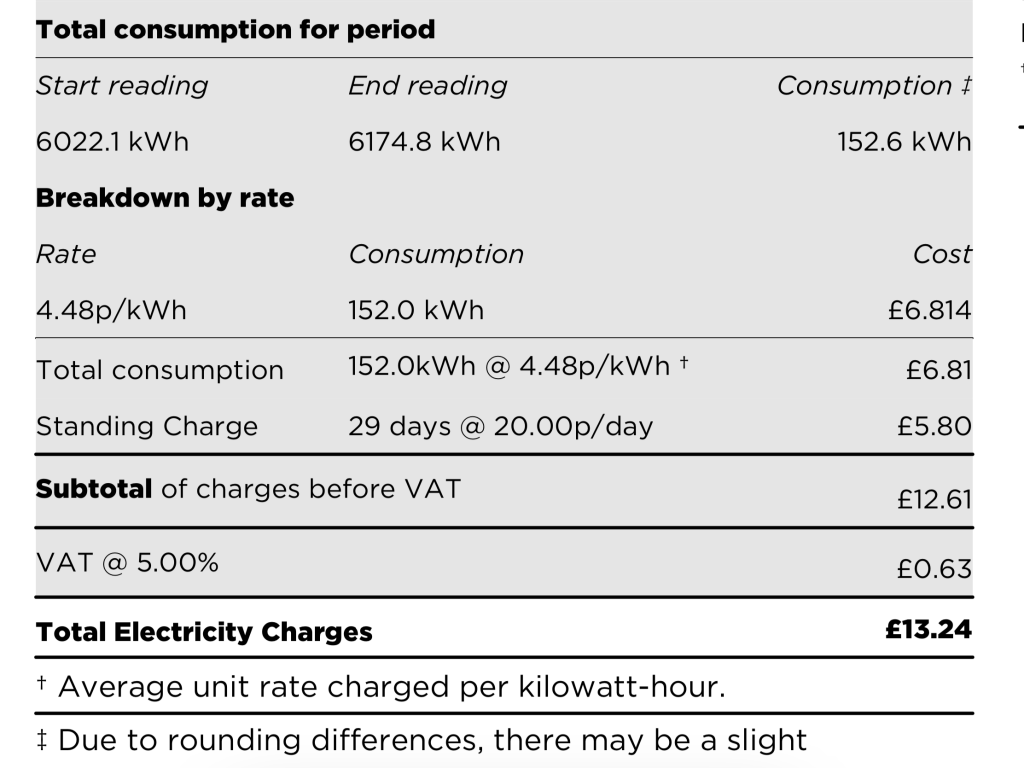
However in recent months wholesale electricity prices have been high. My understanding is that this is from a combination of factors including aging power stations being offline for maintenance and Brexit-related issues around market access and trading. The result of this is that while there’s still variation by time of day in the wholesale markets the pricing is always relatively high. The Agile tariff also applies a multiplier to the market prices to cover Octopus Energy’s costs which drives the retail price even higher. Thus there really doesn’t seem to be a financial benefit to such extreme agility compared to some more conventional tariffs. (I’m not criticising Octopus Energy here – they are completely transparent about how this tariff works)
As a result of this a few days ago I switched to another Octopus tariff – Go. Go is more like a traditional time-of-use tariff – like Economy 7 in the UK – except that Go provides a shorter cheap window of 4 hours not 7 hours and a deeper discount. Go’s headline pricing is a cheap 5p/kWh from 00:30 to 04:30 with a higher standard rate that varies by region and gets adjusted from time to time. My standard rate is 15.96 p/kWh fixed for 12 months.
My electricity consumption is managed by the Home Energy Management System (HEMS) which has been optimising my energy costs for some two and a half years. Having decided to move away from Agile then I need a quick change for my HEMS to work with the new Go tariff. My quick solution (a whole two lines of code) is to edit the Agile costs on the fly each day to replace Agile costs with Go costs in the 4 cheap hours – a softy of hybrid of Agile and Go. Additionally I’ve used an existing configuration file to apply a price cap at which the battery can be charged from the grid preventing grid charging above the 5 p/kWh price as it makes no economic sense to charge the battery at the higher Go price to avoid buying electricity at the same higher grid price. A side-effect of this (which I quite like) is that daytime consumption is still managed in a grid-friendly manner via the Agile price even though I’m physically paying the Go price. (I may have to think about this further if the Agile price starts to drop below 5 p/kWh)
The immediate effect of the standardised Go price at night is that the behaviour of the HEMS for EV charging, dishwasher, washing machine and water heating has all standardised too. All these now start at 00:30 except for water heating which now never happens from the grid since mains electricity is now always more expensive than gas. Dishwasher and washing machine may also be scheduled for during the day if anticipated solar production is high enough, while EV charging and water heating may also happen from solar in a closed loop manner.
Battery charging is a little less standardised at night. Battery charging now varies in a range of 0 to 4 hours overnight varying with anticipated solar production the next day. In the last few days I’ve seen both bookends – no hours of battery charging when the day ahead will be sunny and 4 hours of charging when the day ahead will be more mixed. During the cheap window, if the battery is not charging, then the battery is not permitted to discharge. Yesterday was one of the mixed days.
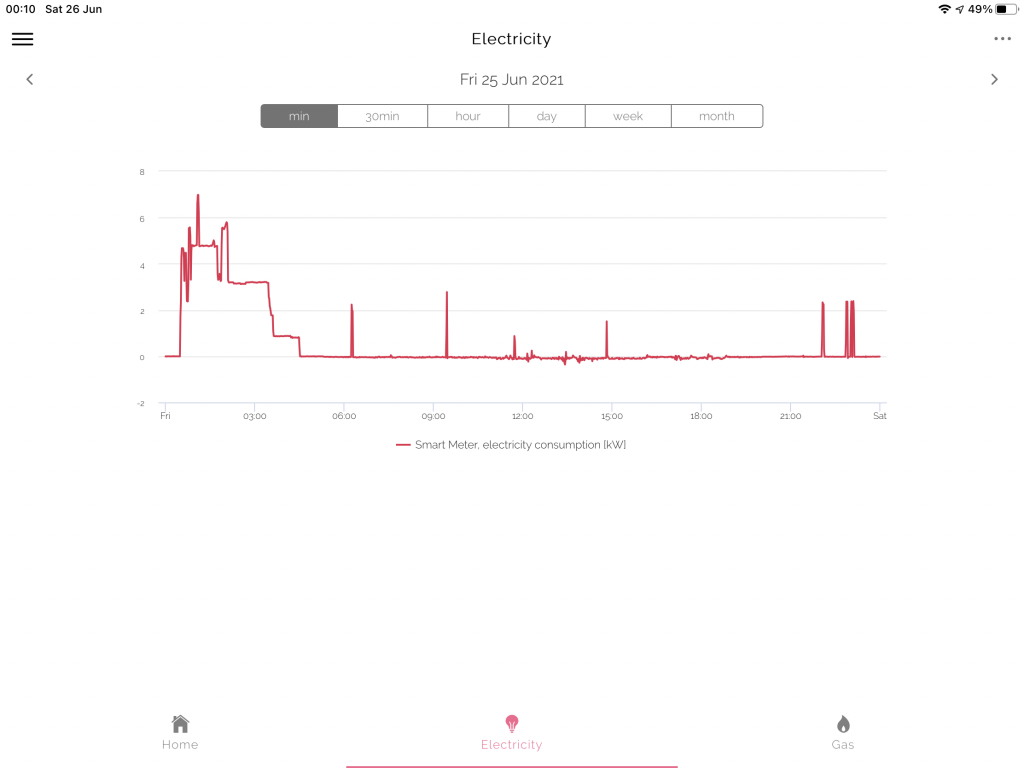
As can be seen from my smart meter data above, almost all the electricity consumed was at night in the cheap window, so my average electricity cost for the day will be very close to 5p/kWh.

The battery charging and discharging is shown by the blue and gold lines above. Initially the battery discharges to avoid paying 16 p/kWh to the grid, then it charges for 4 hours at 5 p/kWh, then there’s some further discharge until the sun rises, in the morning there’s some sun which charges the battery in a somewhat variable manner, then in the afternoon it’s sunnier and the battery reports some ‘Grid Power Out’ which is actually power available for lower priority self-consumption devices, and finally the battery discharges through the evening. There would have been some opportunity to charge the battery more during the afternoon but the battery was already nearly full.
The ImmerSUN gives probably the most complete overview of the home, albeit at only hourly resolution as follows:
- Purple is the electricity consumption (home, battery, dishwasher, washing machine etc)
- Red is bought electricity (58% of total)
- Green is generated electricity (42% of total)
- Blue is electricity used for water heating (which is all from generation and part of the 97% self-consumption)
- Teal is electricity export (which is minimal at 3%)
In conclusion the change to Go seems to be saving me a significant amount of money compared to current Agile prices, and the hybridisation of the tariffs seems to be working well from a control perspective giving me the financial benefits of Go and should deliver the grid-friendly behaviour of Agile (although I’d need poorer weather to demonstrate that).
If you are a GB resident and would like to switch to Octopus Energy (who have incidentally been Which-recommended for years) then we can each earn £50 credit from this referral link.


